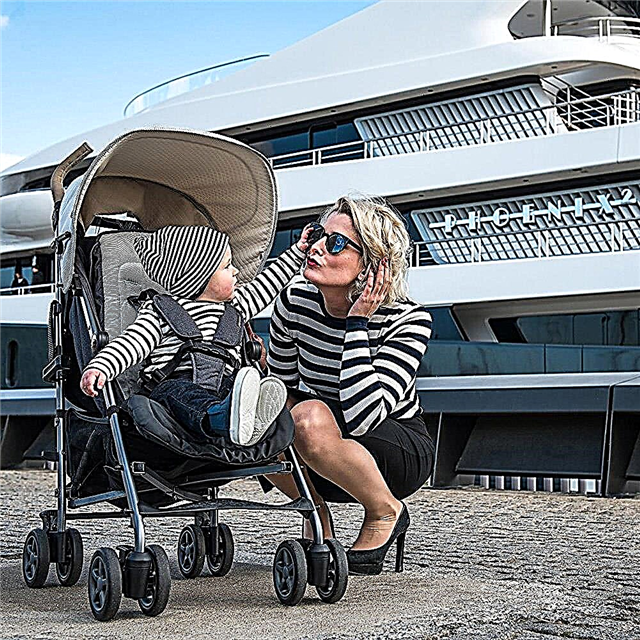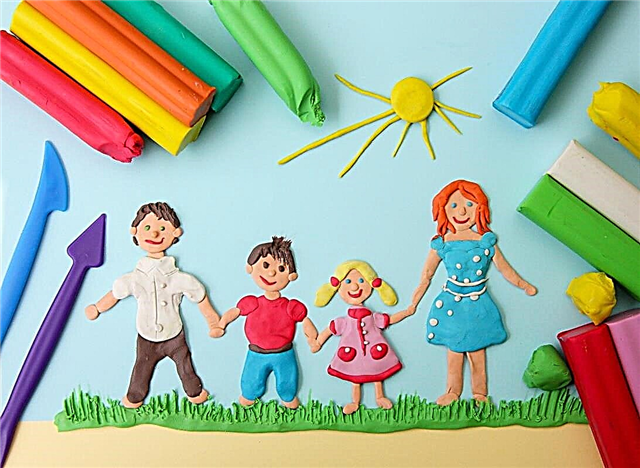Children are children: they actively explore the world, try everything, rush, fall, break their knees, experiment with their bodies. Sometimes it is even difficult for parents to guess what a child can do out of curiosity or simply through carelessness. To be on the safe side, parents need to be prepared for anything, and if something emergency happens, be able to provide assistance before the arrival of the medical team.

If the child:
- choked
A child can choke on food, at least some small object. First of all, you need to free your mouth from food and vomit, or remove the object if it is within reach. You can do this directly with your fingers or a handkerchief. If a piece of food or an object cannot be reached, you do not need to be zealous so as not to push it even deeper. You need to lay the child on your hand face down, holding the chin and back and make up to 5 sharp slaps on the back.

If it is not possible to clear the airways, lay the child on his knees or grab his hands so that his head is down. With your fingertips, press sharply on his chest (the point of application of force is 1 finger below the nipple line). It is important to press on the chest, and not on the stomach.
In parallel with self-help, call an ambulance, and before the arrival of the brigade, alternate the first and second methods of getting rid of the foreign object.
We read in detail: What to do if a child chokes
- took a poisonous substance
If possible, try to find out what substance got into the child's stomach - this will determine further actions. If the child drinks acid, alkaline solution or unknown liquid, do not wash the stomach, it may get worse. Also, you can not give the child water or try to neutralize the substance drunk with acid or alkali.
If the child has swallowed any medication, on the contrary, gastric lavage is indicated, so the child needs to be given plenty of water to drink. It is not necessary to give any additional funds to neutralize what was taken.
If the child has lost consciousness, lay him on a horizontal surface and turn his head to one side so that he does not choke if he vomits.
Regardless of what the child is poisoned with, call an ambulance. If possible, take with you to the hospital samples of vomit or a poison that the child took.
- burnt or scalded
Burns can be caused by hot objects, steam, hot water, or a chemical. If the burn is not chemical, you need to hold the burn site under cold water. You need to keep it long enough, because if the burn is deep, it can continue to spread deeper. Cover the burned part of the body with a sterile napkin. If there are blisters and wounds, do not touch them, do not try to treat them, do not pierce the blisters, and do not remove clothing adhering to the wound.
In case of serious burns, be sure to call an ambulance. While the brigade is traveling, do not water or feed the child. For severe pain, an anesthetic can be given.
Small and superficial burns do not require hospitalization, so you can just go to the emergency room.
In case of a chemical burn, rinse the burn area well with water. If the substance gets inside and the esophagus is burned, you need to call an ambulance. Do not rinse the stomach or give the child water.
- got frostbite
The main rule for frostbite: rewarming should occur from the inside. Frostbite tissues of the body seem to be deprived of nourishment, if they are "warmed" outside, and the nourishment has not yet been restored, they can die. When rewarming occurs naturally from the inside, nutrition in the tissues is restored as they are warmed, that is, gradually, from the inner layers to the outer ones. In addition, intense rewarming from the outside can lead to burns (for example, if limbs are heated in hot water).
In order for warming to occur smoothly, a heat-resistant bandage (for example, made of cotton wool and cling film) must be applied to the frostbitten area. This will help prevent sudden temperature changes. Additionally, you can give a warming drink. All these measures must be taken while the ambulance is traveling.
- banged his head
If the child hits his head, something cold should be applied to the injury site (for example, an ice pack wrapped in a cloth or towel). It is imperative to monitor the child's condition: if he is inhibited, complains of headache and nausea, be sure to call an ambulance. The same should be done if the child is unconscious. Pay attention to the baby's breathing difficulties after the impact.
- shocked
The most important thing is to break the child's contact with the source of tension. If you cannot turn off the appliance, you need to remove it from the child. For this, objects that do not conduct current are used: a dry wooden stick (mop, chair leg), a pack of newspapers. Then call an ambulance.
If the child is unconscious and without signs of life, do artificial respiration and closed heart massage until the resuscitation team arrives.
- fracture or sprain
It is difficult to distinguish a fracture from a sprain without a picture, so a traumatologist should examine the child. While you are waiting for an ambulance to go to the emergency room, fix the injury (for example, using rolled sheets). Usually the site of the fracture or sprain is swollen, so you can apply "cold" (ice, a bandage soaked in ice water). If the injury is open, apply a sterile dressing. The damaged body part can be raised slightly to improve blood flow and reduce swelling.
- hurt and bleeds
If the blood is scarlet and flows out in a pulsating stream, the artery is damaged. To stop the bleeding, you need to bandage the area above the wound (a twisted piece of tissue or a tourniquet - a special rubber tube will do).
If the blood is dark and flows slowly, the vein is damaged. You need to bandage the wound itself.
For capillary bleeding, pinch the wound and, if possible, lift the injured limb. Apply a sterile pressure bandage to the bleeding area, if possible with a hemastatic sponge. If the dressing is soaked in blood, it is not recommended to change it. Place an ice pack over the bandage.
If something sticks out of the wound (glass or other object) - do not pull it out yourself. Pinch the area around the wound and wait for an ambulance.
If a child has a nosebleed, sit him down, apply "cold" to the bridge of his nose. Cotton swabs soaked in 2% hydrogen peroxide solution can be inserted into the nasal passages.
- is in a state of shock
A state of shock is a reaction of the nervous system to severe shocks. In a child, shock can be the result of trauma, accident (bleeding, burns, or ordinary fear). Signs of shock:
- pallor of the skin;
- cold sweat;
- chills;
- dizziness;
- nausea or vomiting;
- rapid breathing.
Children are often shocked after accidents, so any accidents must be dealt with immediately, even when the child shows no signs of shock.
Lay the baby on its side and make sure he is breathing. Unbutton your clothes at the neck, chest and waist. Wrap your child up, but don't overheat him. The child should remain at rest, and you should be with him and calm him down before the ambulance arrives.
- sinks in water
You should try to get the child out of the water, but if the situation is critical, do not waste time and provide assistance right in the water. The child's mouth should be on the surface. If breathing is impaired, do mouth-to-mouth resuscitation without trying to remove water from the stomach or lungs. When lifting your child out of the water, make sure that his head is tilted down (this will prevent water from entering the lungs).
On land, the child must be laid on a horizontal surface, free of water from the respiratory tract, and make sure that the child is breathing and has a pulse.
When breathing is restored, free the child from wet clothes and cover with something dry and warm. It is imperative to show the child to the doctor, even if nothing bothers him.
- damaged eyes
The eyes are very sensitive and easily damaged, and any eye injuries are very painful.
If something gets into the eye, remove the foreign body with a piece of cotton wool soaked in water. If you can't do it yourself, or you managed to remove it, but the eye continues to hurt, consult a doctor.
If the child has bruised eyes, go to the hospital immediately. The eye must be covered with a sterile tissue.
If chemicals get into your eyes, rinse them thoroughly with cold clean water (within 15 minutes), cover with a clean gauze bandage. Take to the doctor.
- stung by an insect
Mosquito bites, bees, wasps, mosquitoes, midges are very painful. The bite site usually swells, turns red, and sometimes itches a lot. Some children react to bee stings with severe allergies, which manifests itself in swelling of the respiratory tract. If the child begins to breathe heavily, call an ambulance immediately.


If a sting remains in the skin, remove it with tweezers. It must be removed completely so that the poison does not penetrate further into the skin. You can apply "cold" to the bite site to relieve swelling, and then smear it with an anti-itch remedy (for example, brilliant green - it helps against mosquito bites). We read in great detail: What to do if a child was bitten by mosquitoes, midges, bees, wasps - first aid for insect bites https://razvitie-krohi.ru/eto-polezno-znat/chto-delat-esli-rebenka-pokusali-komaryi -moshki.html >>>
Yet:
Timely measures of first aid in emergency situations will help to avoid serious consequences, and in some cases even save the child's life.
List of related books:



